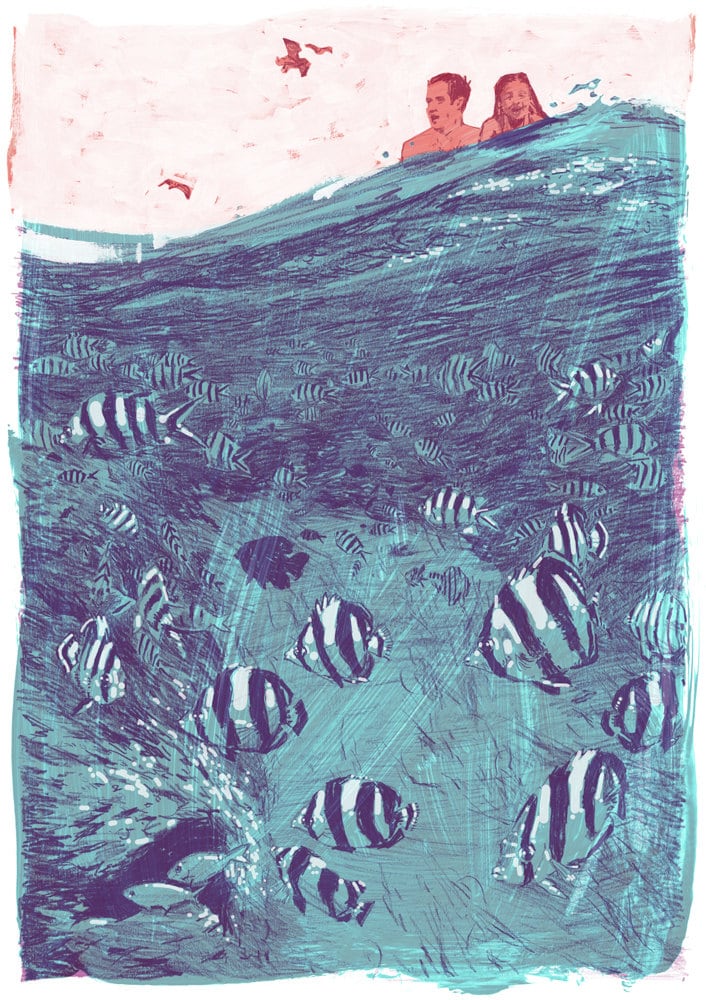

For one, he physically endangers her when they’re playing together in the water she implies that she’s not a strong swimmer and she’s on a half-deflated float, but Seymour refuses to allow her to go back to shore. Seymour’s own desire to connect with innocence through Sybil is violent, too. Instead, they are morally nuanced people with inherent impulses towards destruction. So although Sybil is certainly childlike, her behavior shows that even children aren’t perfectly innocent.

She also goes out of her way to stomp on the remnants of a sandcastle (apparently to have the satisfaction of destroying it fully), and she kicks sand in Seymour’s face-two relatively mild incidents that nevertheless point to underlying violent impulses. For instance, even though Sybil is a child and is the pinnacle of innocence in Seymour’s eyes, he implies that he saw her abusing someone else’s dog. That Seymour is more comfortable with children, and Sybil in particular, is more evidence that he is drawn towards childlike naivete, playfulness, and simplicity.īut throughout, Salinger links innocence and violence in ways that suggest that innocence really isn’t innocent at all. Throughout the story, Seymour’s bathrobe is a sort of security blanket for him and symbolizes his refusal to open up to others, so it’s significant that he sheds it entirely when Sybil comes by to go swimming. This dynamic is reflected through the symbol of Seymour’s bathrobe. In contrast, the adults around Seymour are either wary of him or deeply dislike him (a feeling that appears to be mutual), such the woman in the elevator who flees when Seymour inexplicably accuses her of stealing glances at his feet. This furthers the depiction of him as a man who is drawn towards innocence. Seymour seems to have an easy time befriending children in general-besides Sybil, he’s also friends with a three-year-old named Sharon, who is staying at the resort with her family. That he makes it up on the spot to entertain and delight Sybil reveals how much joy he gets from his childlike connection with her. At this point, the bananafish die of “banana fever.” Seymour’s story is both simplistic (in that it’s easy to follow) and entirely outlandish.
A perfect day for bananafish analysis full#
His story sounds like it was made up by a child: bananafish are like regular fish, he explains, only they swim into holes that are full of bananas, and they gorge themselves on those bananas until they’re so fat that they can’t swim back out of the hole. Seymour’s story about the made-up bananafish also shows him mirroring Sybil’s own childlike imagination and curiosity. Carpenter, seems annoyed by Sybil and is constantly shushing her or shooing her away, Seymour appears to get genuine joy out of their interactions, which is why he actually engages with and responds to everything she says-even when it’s as silly and bizarre as eating candle wax. I never go anyplace without them,” matching her enthusiasm. For instance, when Sybil declares that she loves eating candles, without missing a beat, Seymour responds, “Who doesn’t?” And when Sybil adds olives to the list of things she loves, he responds, “Olives and wax.

Implied to be around four or five years old, Sybil is curious and whimsical, and she brings out an equally playful and talkative side to Seymour. Seymour is horrified by the callousness and materialism among adults at the beach resort where the story takes place, so his only happiness comes from his childlike rapport with a young girl named Sybil. By refusing to depict an innocence unmarred by violence, Salinger suggests that violence is an integral part of human nature, even for the very young. For one, the story’s children are not entirely innocent (they themselves can be violent and manipulative), and-more importantly-Seymour’s desire to connect with them is somewhat predatory, so his quest for innocence itself corrupts the children. However, no matter how much Seymour plays with children, he cannot return to his prewar state. Having just returned from the trauma and violence of World War II, Seymour seems to want to access his prewar innocence through playing with children, reveling in their playfulness, imagination, and naivety. In “A Perfect Day for Bananafish,” innocence and violence often go hand and hand.


 0 kommentar(er)
0 kommentar(er)
